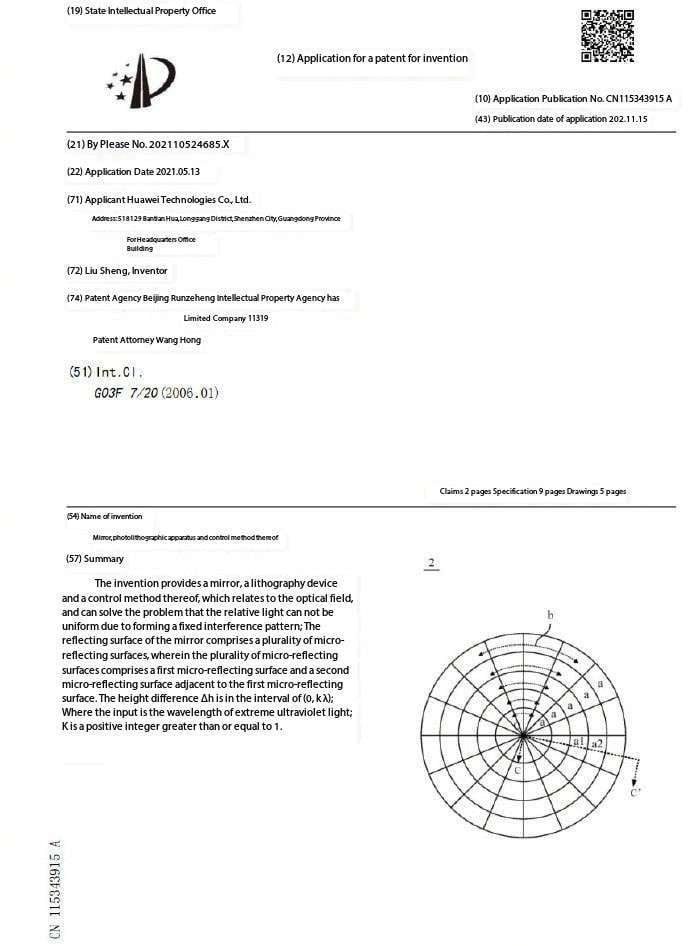Huawei Makes Major Breakthroughs in Semiconductor Industry, Challenging US Dominance
Chinese technology giant Huawei has made significant strides in the field of semiconductors with the recent issuance of a patent for the development of Extreme Ultra Violet (EUV) lithography and the creation of photonic chips. These innovations could potentially revolutionize the industry and challenge the dominance of US and European companies in the field.
Huawei’s advancements in the field of semiconductors come as the company faces significant challenges due to US sanctions and restrictions on its access to chips and other key technologies. Despite these challenges, Huawei has continued to innovate and advance in the field, demonstrating its determination and resilience.

The EUV lithography patent allows Huawei to produce semiconductors with nodes smaller than 7nm, a major advancement in the industry. As the demand for smaller and more efficient chips increases, traditional manufacturing methods are reaching their limits and it is becoming increasingly difficult to produce smaller chips using existing technologies. Companies such as TSMC are already working on 2nm chips, but Huawei’s ability to produce semiconductors below 7nm nodes could give the company a significant advantage in the market and position it as a leader in the field, potentially challenging the dominance of companies such as ASML, a major provider of EUV equipment based in the Netherlands.
In addition to the EUV lithography patent, Huawei has also made significant progress in the development of photonic chips, which belong to the field of optoelectronics and have several advantages over traditional silicon chips. Photonic chips have superior transmission performance, allowing for significantly improved efficiency in electronic equipment, and can reach data transmission speeds of up to 300Gbps, which is 10-50 times faster than current electronic chips. The production process for photonic chips does not require lithography machines, further reducing the need for equipment from US and European companies.
These technological advancements by Huawei could have significant implications for the semiconductor industry and challenge the dominance of US and European companies in the field. It is possible that the Netherlands, home to ASML, may be concerned about the impact of these developments on their semiconductor industry and the potential reduction in demand for their EUV equipment. However, it is still early in the process and the ultimate impact of these breakthroughs is unclear.
It will be interesting to see the future developments and the role that Huawei plays in shaping the future of the semiconductor industry. The company’s determination and ability to innovate and advance in the face of challenges is a testament to its strength and potential to succeed





